
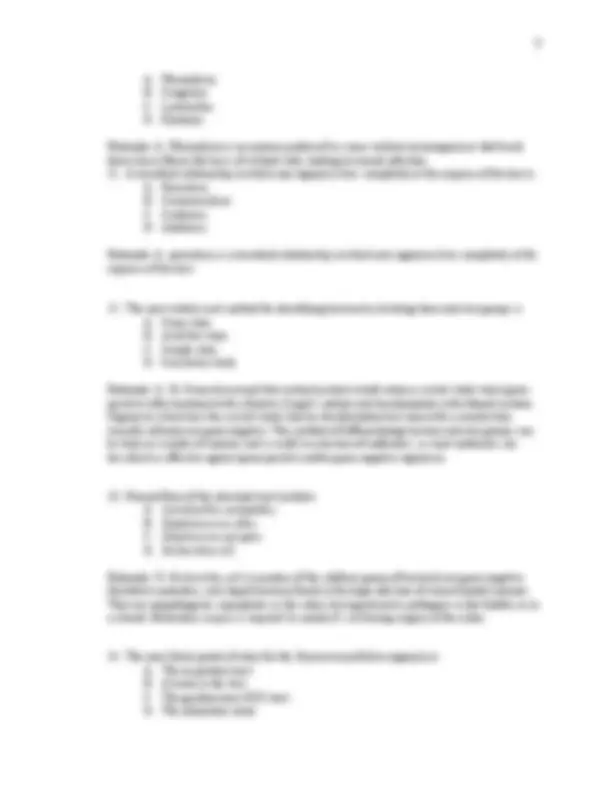
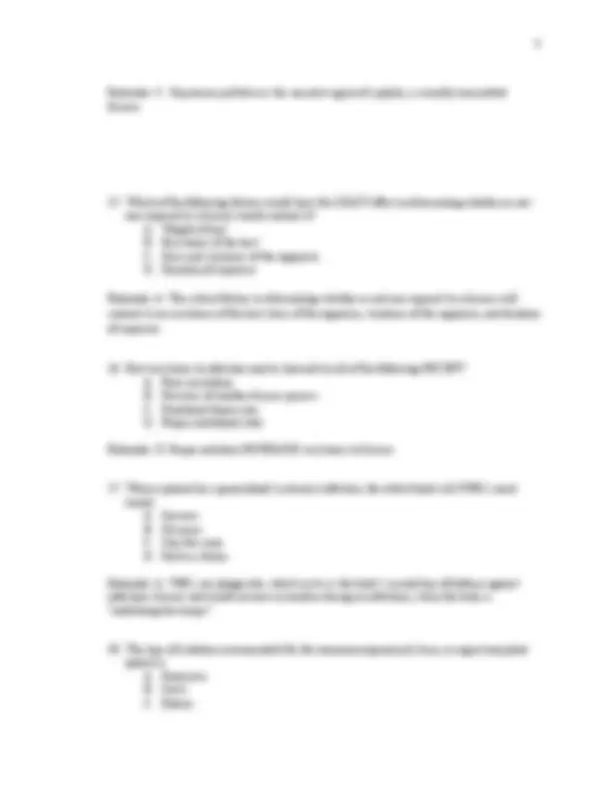
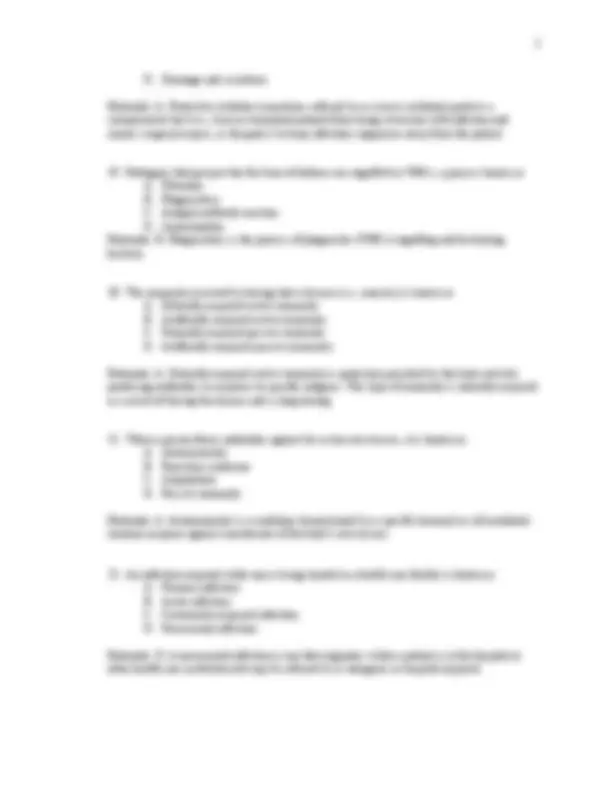
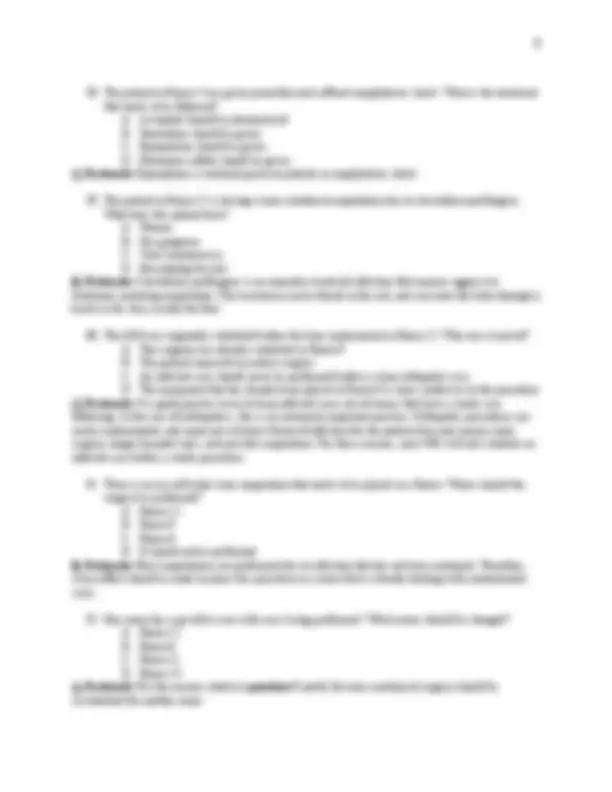
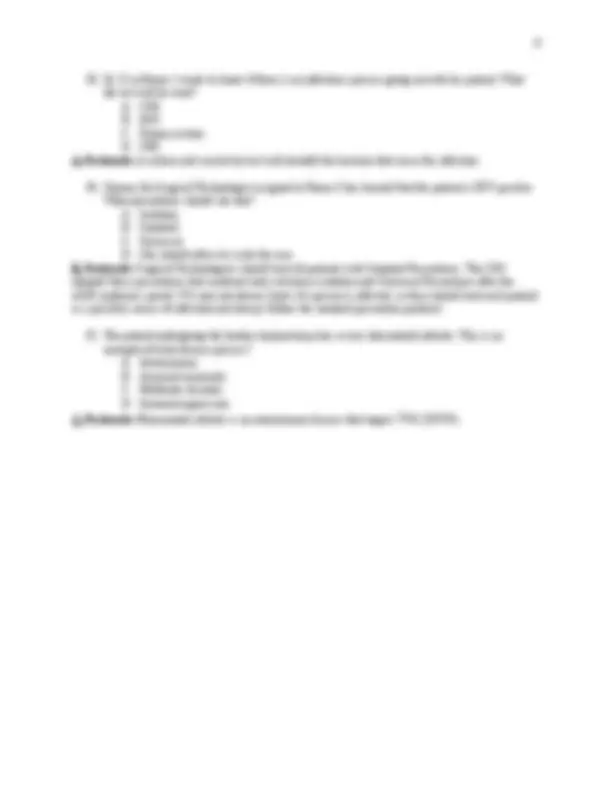


Study with the several resources on Docsity

Earn points by helping other students or get them with a premium plan


Prepare for your exams
Study with the several resources on Docsity

Earn points to download
Earn points by helping other students or get them with a premium plan
Community
Ask the community for help and clear up your study doubts
Discover the best universities in your country according to Docsity users
Free resources
Download our free guides on studying techniques, anxiety management strategies, and thesis advice from Docsity tutors
A set of exam questions related to microbiology and infection control. It covers topics such as the identification of disease-causing microorganisms, the transmission of infectious agents, the immune system's response to pathogens, and the prevention and control of infections in healthcare settings. The questions test the reader's understanding of key concepts in microbiology, epidemiology, and infection control practices. The document could be useful for students preparing for exams or assessments in fields such as nursing, medicine, or public health, as it provides a comprehensive review of important microbiological principles and their clinical applications.
Typology: Lecture notes
1 / 9

This page cannot be seen from the preview
Don't miss anything!






Micro & Infection Control Exam Questions
Rationale: D. Staphylococcus aureus is a spherical-shaped ( coccus ) bacterium which appears in clusters (staphyl-) and produces coagulase (the enzyme which coagulates plasma), resulting in the formation of pus or abscesses
Rationale: C. Treponema pallidum is the causative agent of syphilis, a sexually transmitted disease
D. Drainage and secretions Rationale: A. Protective isolation (sometimes referred to as reverse isolation) protects a compromised host (i.e., burn or transplant patient) from being overcome with infection and mimics surgical asepsis, as the goal is to keep infectious organisms away from the patient
Rm 7:00 DrB Splenectomy Gen TF DrB Gastrectomy Gen Rm 8:30 Dr.T Cholecystectomy Gen TF Dr.T I & D Gen TF Dr.T Debridement Gen Rm 7:00 Dr.A Cystoscopy MAC TF DrA Cystoplasty Gen TF DrF Pyelogram MAC TF DrF Cystocele repair Gen Rm 7:00 Dr.K Nephrectomy Gen TF Dr.K Choledocholithotripsy MAC TF Dr.K Colectomy Gen Rm 7:00 DrY Carpal Tunnel MAC TF DrY Fasciotomy Gen Rm 7:00 Dr.L Cervical Cone Biopsy Gen TF Dr.L Sentinal Node Biopsy Gen Rm 7:00 Dr.G Trans-sphenoidal Gen Adenoidectomy TF Dr.G Transurethral resection Gen of the prostate TF Dr.G Bletharoplasty Gen Rm 7:00 Dr.W Transmetatarsal amputation Gen TF Dr.W Osteotomy Gen TF Dr.W Rt Knee Arthroplasty Gen Rm 7:00 Dr.R Lumbar laminectomy Gen Rm 7:00 Dr.O Hysterectomy Gen The following questions should be answered using the surgery schedule above